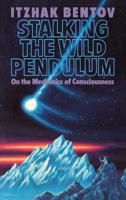Publisher's Synopsis
Charles Robert Darwin, the famous English naturalist and geologist is the central focus of James Mark Baldwin's book Darwin and the Humanities. By introducing the theory of "natural selection" Darwin earned the title Father of Evolution. He singlehandedly identified the process of selective breeding or "natural selection" in which desirable traits are replicated and undesirable traits are removed from the gene pool as an evolutionary process and thereby changed the face of modern science.
The purpose of Baldwin's book on Darwin is to explore the influence and impact Darwin has left on science, especially the "Mental and Moral" sciences. Baldwin does his best to explore the topic in plain speech, or layman's terms, to allow a reader of any background and education the ability to understand his examination of Darwin's legacy. Baldwin hopes that his discussion of Darwin will be useful to future scientists, and future philosophers. His main objective is to stimulate conversation among students on these topics. "I hope, therefore, that this little book may serve to stimulate others, especially students of the further humanities, Anthropology, Philology, Political Science, Literary Criticism, etc., to make careful survey of their respective fields with such an end in view."
Ultimately, Darwin and the Humanities is a captivating exploration of both the famous naturalist and the effects scientific achievements have on other areas of study. By observing Baldwin's exploration we can learn ways to explore the effects of science upon the interests we enjoy in our own lives and scholarly pursuits. Thanks to Baldwin's thoughtfulness of the layman, those of any background and education should be able to understand and appreciate the ingenuity of Darwin's work via this incomparable text.
About the Publisher
Forgotten Books publishes hundreds of thousands of rare and classic books. Find more at www.forgottenbooks.com
This book is a reproduction of an important historical work. Forgotten Books uses state-of-the-art technology to digitally reconstruct the work, preserving the original format whilst repairing imperfections present in the aged copy. In rare cases, an imperfection in the original, such as a blemish or missing page, may be replicated in our edition. We do, however, repair the vast majority of imperfections successfully; any imperfections that remain are intentionally left to preserve the state of such historical works.










